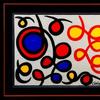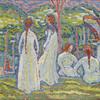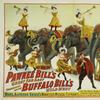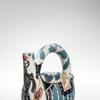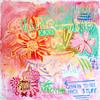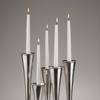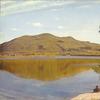The Harvard Art Museums present Inventur—Art in Germany, 1943–55
- CAMBRIDGE, Massachusetts
- /
- November 17, 2017
Showcases artwork largely unknown to American audiences by modern German artists working during the most tumultuous time in that country’s history.
The Harvard Art Museums’ newest special exhibition, Inventur—Art in Germany, 1943–55, will be on view from February 9 through June 3, 2018. The first exhibition of its kind, Inventur examines a largely unaddressed moment in modern German art—from just before the end of World War II to the decade just after—and features more than 170 works by nearly 50 German artists, including women who were integral to exhibitions at the time but whose work has often been overlooked. Much of the artwork presented has never been on view outside Germany.
Taking its name from a 1945 poem by Günter Eich, the exhibition focuses on modern art created at a time when Germans were forced to acknowledge and reckon with the atrocities of World War II and the Holocaust, the country’s defeat and occupation by the Allies, and the ideological ramifications of the fledgling Cold War. Chosen for the way it helps characterize the art of this period, the German word Inventur (inventory) implies not just an artistic stocktaking, but a physical and moral one as well—the reassurance of one’s own existence as reflected in the stuff of everyday life. The exhibition, too, “takes stock,” introducing the richness and variety of the modern art of this period to new audiences, while prompting broader questions on the role of the creative individual living under totalitarianism and in its wake. The exhibition examines major themes of the period—humanism, artistic pluralism, commercialization, and technological progress—to demonstrate, for the first time in an exhibition format, how this art is key to understanding German cultural identity in the 20th century.
“Inventur is devoted to a group of artists who, despite the shock of war and its harsh aftermath, remained fiercely committed to the act of making. Yet these artists deserve our attention not simply because they kept on working when adversity loomed large, but because the art they produced is essential to the full history of modern German art,” said Martha Tedeschi, the Elizabeth and John Moors Cabot Director of the Harvard Art Museums. “As a university-based teaching museum—and as the home of the Busch-Reisinger Museum in particular—we feel it’s our place to look carefully at this period and the work these artists produced.”
The immediate postwar period has been consistently overlooked in the study of German art, with art historians and critics referring to this era as a “gap” or period of apathy due to the death, exile, or isolation of notable modern artists as a result of Nazi cultural policy. This exhibition focuses on artists who experienced both the war and its impact in Germany—on either side of the Iron Curtain—and who were active participants in the defeated country’s burgeoning art scene after war’s end. By necessity, these are artists who were racially and politically accepted, or at least tolerated, by the Nazi regime. They worked across Germany in a range of media; they spanned several generations, underscoring myriad experiences of the war and demonstrating varying levels of familiarity with prewar artistic traditions—experienced firsthand by some, learned by others.
“Without a doubt, this is a highly charged period that continues to spark debate and stir emotion. While we don’t shy away from these challenging conversations, we also encourage visitors to look closely and approach these works on their own terms, to explore what they can tell us about artistic practice and the stubbornness of the art historical canon,” said Lynette Roth, Daimler Curator of the Busch-Reisinger Museum, head of the Division of Modern and Contemporary Art, and curator of the Inventur exhibition. “Inventur presents the missing chapter in postwar German art, offering context that can help us not only better understand a variety of works from the Busch-Reisinger’s robust collection, but also gain a stronger sense of where this period fits within the 20th century as a whole.”
Inventur is based on years of research by Roth and her collaborators, including important contributions from emerging voices in the field. Much of the scholarship has up to now been unavailable to audiences outside Germany.




